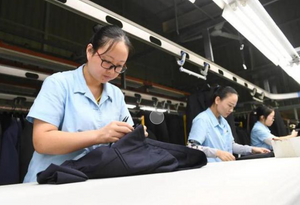
What is Higg FEM certification? What is the process of Higg FEM certification? What is the cost of Higg FEM certification?
Higg FEM (Higg Facility Environmental Module) is a tool launched by the Sustainable Apparel Coalition (SAC) to evaluate the environmental performance of textile, apparel and footwear manufacturing factories. It helps factories measure their environmental impact in energy use, chemical management, wastewater treatment, etc. through comprehensive self-assessment and third-party audits, and provides guidance for improvement.
This article will introduce in detail the background, functions, processes, cost structure of Higg FEM and how to improve sustainability management through Higg FEM.
1. Introduction to Higg FEM Certification
Higg FEM, or Higg Factory Environmental Module, is part of the Higg Index and is specifically designed to measure the environmental performance of manufacturing plants. The tool helps factories evaluate their operations in energy use, wastewater treatment, waste management, chemical use, etc. in order to identify opportunities for environmental improvement. Through a standardized scoring and evaluation mechanism, factories and brands can measure and report their sustainable development progress in a consistent manner.
2. Background and purpose of Higg FEM certification
The textile, apparel and footwear industry is one of the most resource-intensive industries in the world, especially in terms of energy consumption, waste generation and water use. Therefore, SAC launched Higg FEM to help all parties in the supply chain reduce their environmental impact and promote more sustainable production methods. Higg FEM is not just a measurement tool, its purpose is to promote continuous improvement of factories through assessment, thereby helping brands achieve their sustainable development goals.
3. Core content of Higg FEM certification
Higg FEM includes the assessment of multiple key environmental factors, each with detailed metrics. These core elements include:
- Energy Use and Greenhouse Gas Emissions: Evaluate the plant’s performance in terms of energy use and greenhouse gas emissions, including electricity and fuel consumption and their impact on climate change.
- Water resource use and management: Monitor the water resources used by the factory in the production process, including water use efficiency, recycling, etc.
- Wastewater management: Review the factory's wastewater treatment system, including whether the treated water quality meets the standards.
- Waste management: Check the management methods of solid waste generated by the factory, such as packaging materials and production waste, and whether measures are taken to recycle, reuse or properly dispose of them.
- Chemical management: Ensure that the chemicals used in the factory's production process meet safety standards and adopt reasonable use, storage and disposal methods.
- Environmental Management System (EMS): Review whether the factory has established a formal environmental management system and implements relevant environmental policies and procedures.
4. Higg FEM certification scoring system
Higg FEM's scoring system is based on a comprehensive score of each module, each with a different weight, resulting in an overall score. The score not only provides the factory with an overview of its environmental performance, but also allows comparison with its peers. Brands can use these scores to screen suppliers with more sustainable performance.
Each module of the facility is scored based on its level of compliance and best practices. Scores range from 0 to 100, with 0 representing no compliance or management measures and 100 indicating full compliance with best industry practices and standards.
5. Higg FEM Certification and Sustainable Development Goals (SDGs)
Higg FEM is directly aligned with the United Nations’ Sustainable Development Goals (SDGs), with a particular impact in the following key areas:
- Climate Action (SDG 13): By reducing energy consumption and greenhouse gas emissions, Higg FEM helps factories support global climate change response strategies.
- Clean Water and Sanitation (SDG 6): Assess water use and wastewater management to ensure that water treatment processes at facilities do not have negative impacts on the environment and communities.
- Responsible consumption and production (SDG 12): By improving resource efficiency and managing waste, Higg FEM drives the supply chain towards a more environmentally friendly direction.
6. Main functional modules of Higg FEM certification
The main functional modules of Higg FEM assessment include:
- Energy and Greenhouse Gas Emissions: Evaluate the efficiency of your facility’s energy use and the associated carbon footprint.
- Water use: Measurement of water usage in the factory’s production process and its management strategies.
- Wastewater treatment: Ensure that factory wastewater treatment meets environmental protection requirements and reduces pollution to the environment.
- Waste Management: Manage the solid waste generated during production and find ways to reduce or recycle it.
- Chemical management: Ensure the safety of chemicals used in the factory and reduce the emission of harmful substances.
- Environmental Management System (EMS): Establish a robust management system to ensure environmental compliance and continual improvement.
7. Overview of Higg FEM Certification Process
Higg FEM's assessment process is generally divided into five stages, from platform registration to audit and implementation of improvement measures.
Step 1: Registration and platform access
Factories need to register an account on the Higg Index platform first. After obtaining access rights, factories can use the online assessment tool to start filling out the Higg FEM questionnaire. This step is very important for factories using the Higg platform for the first time. After registration, you can follow the system prompts to complete the subsequent operations step by step.
Step 2: Data collection and organization
Before conducting an assessment, the factory needs to collect various detailed environmental data. This data may include energy consumption, wastewater discharge records, waste treatment quantities, chemical usage, etc. in the past year. The data should be collected in a manner consistent with the requirements of the assessment to ensure accuracy and traceability.
Step 3: Complete the Self-Assessment
Factories use the Higg FEM tool to conduct a detailed self-assessment based on the data collected. There are detailed instructions in the system to help factories fill in relevant data and information according to the modules. After completing the self-assessment, the system will generate a preliminary environmental performance report showing the scores and improvement suggestions for each module.
Step 4: External Verification and Audit
To ensure the accuracy of the assessment results, factories can choose to conduct third-party external verification. These auditing agencies will conduct on-site audits of the submitted data and assessment results to verify their authenticity and compliance. After passing the audit, the factory will receive an officially certified Higg FEM score, which will enhance its credibility among customers.
Step 5: Improvement and Optimization
Once the assessment is completed and passed, the factory needs to make environmental improvements based on the recommendations in the report. These improvements can be things like reducing energy consumption, improving wastewater treatment processes, or strengthening chemical management. The effectiveness of the improvements will be measured in the next round of assessments.
8. Composition of Higg FEM Certification Fees
The costs of Higg FEM are usually divided into the following areas:
- Platform usage fee: Each factory needs to pay a certain usage fee when being evaluated on the Higg platform. The fee standard varies according to the size of the factory and the content of the evaluation.
- Third-party audit fees: If the factory chooses to conduct an external audit, it must pay the auditing agency's fees. Audit fees vary depending on the depth of the audit, the size of the factory, and the country in which it is located.
- Internal resource costs: The personnel, time and resources required by the factory to complete the assessment are also hidden costs, especially in the process of data collection, compilation and reporting.
9. Factors affecting the cost of Higg FEM certification
The cost of Higg FEM will be affected by a number of factors, such as:
- Factory size: Larger factories require more data collection and review, and therefore are more expensive.
- Selection of auditing agency: Different third-party auditing agencies have different charging standards, and some international certification agencies charge higher fees.
- Region: The cost will also be affected by the country and region where the factory is located. For example, the cost may be relatively low in developing countries.
10. Typical range of Higg FEM certification fees
Generally speaking, the total cost of Higg FEM includes platform usage fees and external audit fees, which usually range from US$5,000 to US$15,000. For small and medium-sized enterprises, this fee may put some pressure on resources, but in the long run, it will help improve the market competitiveness and sustainability performance of enterprises.
We provide professional third-party inspection services to ensure that the tableware and kitchenware products finally delivered meet the standards, regulations and target market requirements, avoid disputes due to product quality issues, and improve supply chain management and quality control measures.
Share this product

What is Higg FEM certification? What is the process of Higg FEM certif
Higg FEM (Higg Facility Environmental Module) is a tool launched by the Sustainable Apparel Coalition (SAC) to evaluate the environmental performance of textile, clothing and footwear manufacturing factories. Its full name is Higg Facility Environmental Module.
